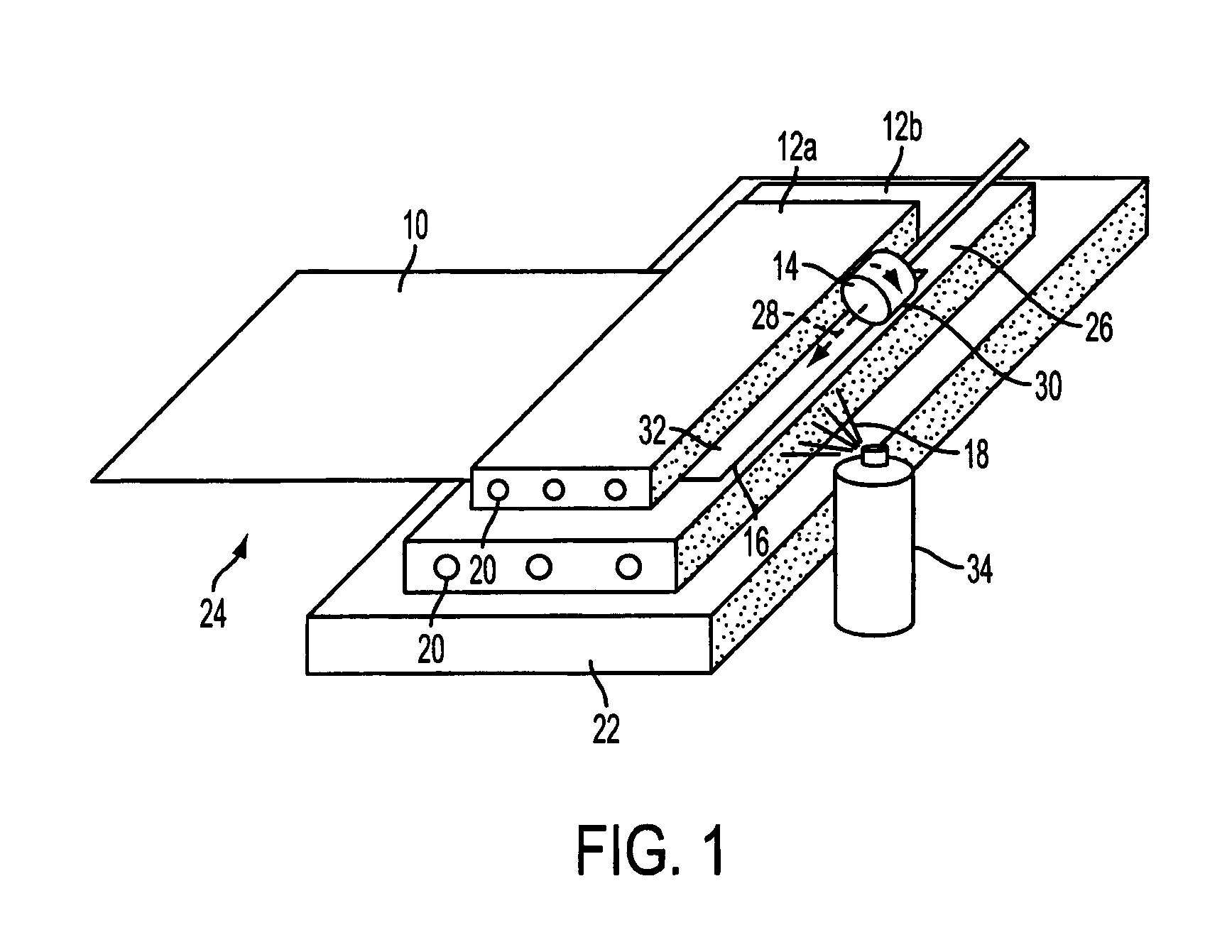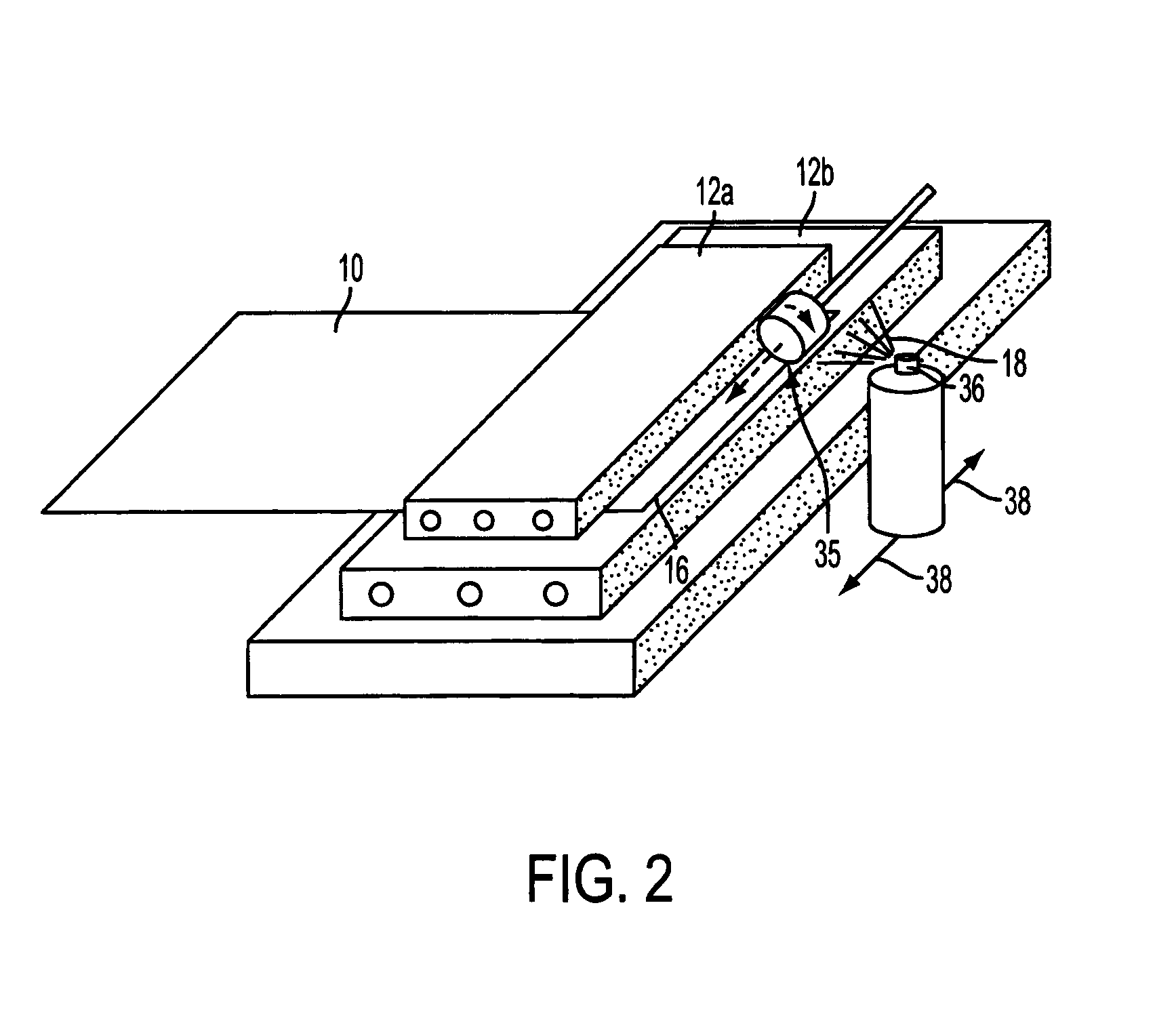Chamfering of laminate layers
a technology of laminate layers and chamfering, which is applied in the direction of maintenance and safety accessories, grinding machines, liquid fuel engines, etc., can solve the problems of increasing tsub>g /sub> with time, hardening and brittleness of resin, and increasing cold tsub>g /sub>, so as to improve the effect of machine convenience and decreasing temperatur
- Summary
- Abstract
- Description
- Claims
- Application Information
AI Technical Summary
Benefits of technology
Problems solved by technology
Method used
Image
Examples
Embodiment Construction
[0022]Referring to FIG. 1, a prepreg ply 10 is clamped between refrigerated steel blocks 12a, 12b, and a grinding wheel 14 is arranged to translate across a free edge 16 of the ply 10 to remove material from that edge to create a chamfer. Refrigerant 18 is applied locally to the free edge 16 of the ply 10 during the chamfering operation. The apparatus and chamfering technique are described in further detail below.
[0023]The prepreg ply 10 comprises a sheet of glass fibre fabric, which has been impregnated with a thermoset matrix, which in this example is pre-catalysed epoxy resin. The glass fibre fabric consists of two layers and is commonly referred to as ‘triax’. The first layer includes a set of unidirectional (ud) fibres, whilst the second layer is a layer of ‘biax’, which has a first set of unidirectional fibres oriented at an angle of +45° relative to the fibres in the first layer, and a second set of unidirectional fibres oriented at an angle of −45° relative to the fibres in ...
PUM
| Property | Measurement | Unit |
|---|---|---|
| temperature | aaaaa | aaaaa |
| temperature | aaaaa | aaaaa |
| Tg | aaaaa | aaaaa |
Abstract
Description
Claims
Application Information
 Login to View More
Login to View More - R&D
- Intellectual Property
- Life Sciences
- Materials
- Tech Scout
- Unparalleled Data Quality
- Higher Quality Content
- 60% Fewer Hallucinations
Browse by: Latest US Patents, China's latest patents, Technical Efficacy Thesaurus, Application Domain, Technology Topic, Popular Technical Reports.
© 2025 PatSnap. All rights reserved.Legal|Privacy policy|Modern Slavery Act Transparency Statement|Sitemap|About US| Contact US: help@patsnap.com



